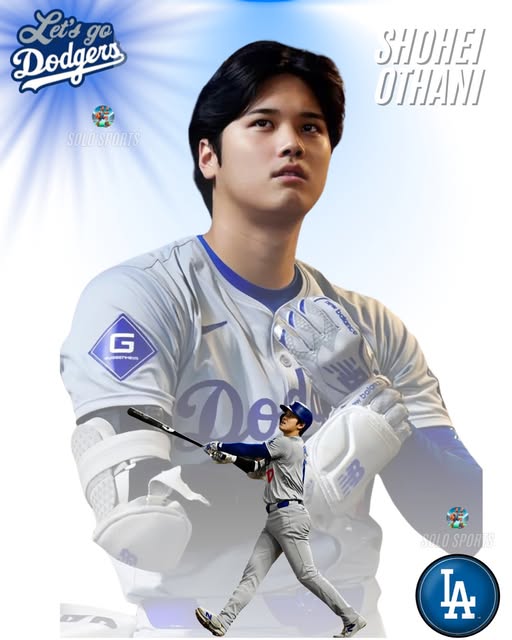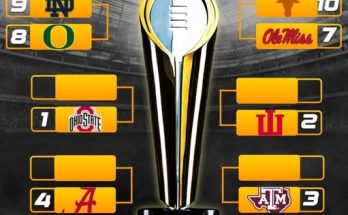He is the only player in Major League Baseball history to rank among the top pitchers and hitters in the same season. That alone should be enough to define a once-in-a-century talent, but for Shohei Ohtani, it’s just the beginning. The Japanese sensation continues to dazzle, dominate, and redefine what’s possible in professional baseball. As he steps into the next phase of his career with unshakable poise, unmatched versatility, and global stardom, Ohtani stands on the precipice of creating even more history—unlike anything we’ve ever seen before.
Ohtani’s arrival in Major League Baseball wasn’t just a typical international signing; it was a seismic event. From the moment he stepped onto American soil, the expectations were astronomical. A two-way star in Japan’s Nippon Professional Baseball league, Ohtani captivated scouts and executives with his fastball that touched triple digits and a swing that launched balls deep into the stands. Most teams didn’t know how to handle such a rare commodity—should he pitch? Should he hit? Could he realistically do both at the highest level of competition?
The Los Angeles Angels were willing to take that leap of faith, and the results have been nothing short of extraordinary. In just a few years, Ohtani has gone from intriguing curiosity to undisputed legend-in-the-making. He doesn’t merely play both sides of the ball—he excels at both in a way no one else ever has. In 2021, he posted 46 home runs, 100 RBIs, and a .965 OPS as a hitter, while also finishing the year with a 3.18 ERA and 156 strikeouts in 130.1 innings pitched. Those stats aren’t impressive just in the context of a two-way player—they’d be elite if he were solely a hitter or solely a pitcher. That’s the level of dominance we’re talking about.
Ohtani has shattered barriers that once seemed impenetrable. For more than a century, baseball operated within rigid parameters: pitchers pitch, hitters hit, and rarely do the two intersect outside of novelty or emergency situations. Babe Ruth came closest, but even he gave up pitching to focus on slugging after just a few seasons. Ohtani has obliterated that mold and rewritten what’s possible. He’s not just an exception; he’s become the new standard bearer for a more dynamic, multi-faceted brand of baseball.
Yet what sets Ohtani apart isn’t just his stats—it’s the way he plays the game. There’s a grace to his delivery on the mound, a poetry in his follow-through at the plate, and a quiet intensity in his demeanor. He doesn’t showboat, doesn’t provoke, doesn’t demand the spotlight—he simply earns it with every pitch thrown and every ball crushed into the stands. He plays with humility and joy, traits that have endeared him to fans around the world. His rise transcends sport; it’s a cultural phenomenon.
Perhaps most impressively, Ohtani has accomplished all of this while navigating unprecedented challenges. He’s had to overcome serious injuries, including Tommy John surgery that sidelined his pitching for a full season. Lesser athletes would have retreated or reinvented themselves into more conventional roles. Not Ohtani. He attacked his rehab with the same discipline that defines his approach to the game. When he returned, he was better than ever, as if the time off had only sharpened his focus and strengthened his resolve.
He’s also borne the burden of representation. As a Japanese superstar in America, he carries the pride and expectations of an entire nation. Every at-bat, every start, is watched not just by fans in California but by millions across Japan and beyond. The pressure is immense, but he wears it lightly. Ohtani is not just a player—he’s an ambassador, a bridge between cultures, and an inspiration for a new generation of athletes who dare to believe that greatness doesn’t have to be confined to a single role.
The 2024 season marked yet another turning point. Ohtani, now with the Los Angeles Dodgers, made one of the most high-profile free agent moves in sports history. The contract was staggering in scope—a $700 million megadeal that reflected not only his talent but his marketability and global appeal. Critics wondered if he could possibly live up to the hype, especially while recovering from another arm injury. But if history has taught us anything, it’s that doubting Ohtani is a fool’s errand.
Despite being temporarily unable to pitch, Ohtani hasn’t missed a beat at the plate. He leads the league in multiple offensive categories and remains a nightly highlight reel. Home runs that soar into the night sky. Stolen bases that baffle opposing catchers. Clutch hits in crucial moments. The Dodgers, already one of baseball’s elite franchises, now boast the most electrifying player in the sport—and the results speak for themselves. Attendance is up. Television ratings are soaring. And the team has emerged as a legitimate threat to capture another World Series title.
And when he returns to the mound in 2025? The baseball world could witness something even more extraordinary. A fully healthy Ohtani, backed by the Dodgers’ depth and resources, could unlock an entirely new level. With a pitching repertoire that includes a devastating splitter, a rising fastball, and a biting slider, he has the tools to dominate any lineup in the league. Paired with his slugging power, we may soon be discussing feats so improbable they belong in comic books.
There’s also the legacy factor. With every milestone he hits, Ohtani moves deeper into uncharted territory. He’s not just accumulating numbers; he’s redefining records. Who else could legitimately contend for both the Cy Young and MVP awards in the same season? Who else could lead the league in home runs while also being the ace of a playoff team’s rotation? No one—not now, not ever before. What we are witnessing is generational, perhaps even mythical. Years from now, fans will tell their children they saw Shohei Ohtani play—and those children might struggle to believe it wasn’t fiction.
Baseball has always cherished its legends. Ruth, Mays, Aaron, Koufax, Griffey—the pantheon is elite and exclusive. Ohtani, still in the prime of his career, is well on his way to etching his name alongside them, not just as an equal but as a revolutionary. His impact can’t be measured solely in stats or awards. He’s changed the way the game is played, perceived, and imagined. He’s inspired teams to rethink how they develop young players. Could the next generation of athletes be trained as both pitchers and hitters? Could Ohtani’s success signal a shift in how baseball approaches talent and versatility?
Of course, none of this has come easy. The workload is grueling. The media scrutiny is relentless. The physical demands are unmatched. Yet through it all, Ohtani remains committed to excellence. He trains like a man possessed, studying film, adjusting his mechanics, and continuously finding ways to improve. He doesn’t take his gifts for granted. And perhaps that’s what makes him so compelling—not just the talent, but the tireless pursuit of perfection.
Off the field, Ohtani is equally magnetic. He’s reserved but gracious, humble yet confident. He embraces his fame without being consumed by it. He donates time and money to causes close to his heart. He respects the game and honors those who came before him. In an age of brash personalities and social media drama, Ohtani is refreshingly focused on what matters: the game, the team, the craft.
As the 2025 season approaches and Shohei Ohtani prepares to return to full two-way dominance, there’s a sense that the best may still be ahead. And that is a staggering thought. Because if what we’ve already seen is just the beginning, then the story of Shohei Ohtani isn’t just remarkable—it’s historic. He is baseball’s unicorn, its marvel, its once-in-a-lifetime genius. He is rewriting what’s possible, not just for this generation, but for every generation to come.



